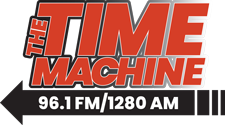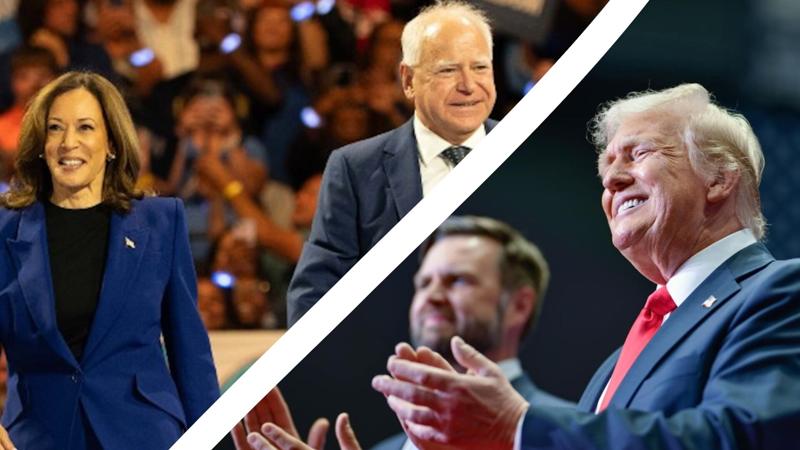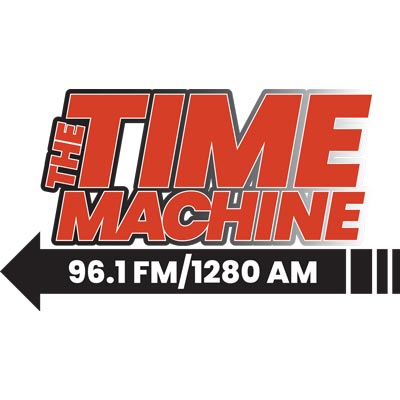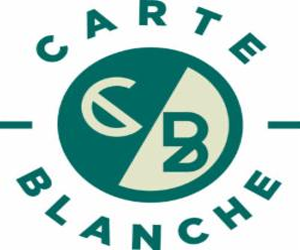Democratic Vice President Kamala Harris was in battleground North Carolina on Thursday, Republican former President Donald Trump is coming this Saturday.
Republican U.S. Sen. J.D. Vance, Trump’s running mate, took in East Carolina’s football game with Appalachian State on Saturday and is in Raleigh on Wednesday, and Democratic Minnesota Gov. Tim Walz, Harris’s running mate, will be in Asheville on Tuesday.
North Carolina’s 16 electoral college votes, which polls say are in a statistical dead heat, are highly coveted. And seven more weeks of blitz is forecast.
Monday marked 50 days from Election Day and 31 days from early in-person voting. Absentee by mail ballots, delayed by litigation against the embattled State Board of Elections, start going out Friday signaling the start of voting.
“While the polling has to be placed into the context of ‘snapshots in time,’” Catawba College political science professor Dr. Michael Bitzer tells The Center Square, “to see the pretty significant shift from pre-July 21 with Biden typically behind Trump on average at 5 percentage points, to now post-July 21 with Harris and Trump switching leads but all within the margins of error, the horse race is very apparent within what I describe as the typical outcome in a closely-contested North Carolina: the margin of victory will likely be within the margin of error.”
“It would be historical for Harris to win the state,” said Dr. Steven Greene, political science professor at N.C. State, told The Center Square, “but it is entirely common for a state to move from noncompetitive status to swing status status – and vice versa. Just eight years ago, Ohio and Florida were both still being heavily contested and now they are solidly in the Republican column. Meanwhile, nobody was contesting Arizona and Georgia eight years ago, and now they are among the closest states.
“And there really is every reason to believe North Carolina is genuinely up for grabs this year.”
Since Lyndon B. Johnson in 1964, the only Democrats in 14 election cycles since to do so were Jimmy Carter (1976) and Barack Obama (2008). Neither repeated four years later.
“Nate Silver’s model currently has us as the second-most likely ‘tipping point state’ after Pennsylvania, i.e., the state second-most likely to determine the outcome of the electoral college,” Greene told The Center Square in an email Monday. “So, given this context we should expect both campaigns to continue to pour resources into winning the state – including that most valuable of resources, the candidates’ time.”
RealClear Polling, without margin of error factored in, computes a polling average in Trump’s favor of 48.3%-47.9%. Project 538 computes Trump ahead 47.5%-47.1%.
“Less than two months out, North Carolina does look like a competitive state for the general election,” said Dr. Martin Kifer, director of the High Point University Research Center. “Right now, I do not have any reason to doubt what we see in polling averages like 538 and Real Clear Politics that it is very close.”
According to social media posts late last week by AdImpact Politics and FoxNews, future presidential ad reservations in North Carolina include $30 million by Democrats and $20 million by Republicans. There’s more in fellow battleground states Pennsylvania ($136 million), Michigan ($97 million), Georgia ($69 million), Wisconsin ($63 million) and Arizona ($57 million).
Nevada ($28 million) is the only consensus battleground state with less.
“Based on the money committed so far in North Carolina,” Bitzer says, “it looks like Democrats have a 3-2 advantage over Republicans and that doesn’t take into account the investment in the ground game operations, which I think is just as crucial. From what I can tell, Harris has 25 field offices in the state.”
A spokesman for the North Carolina Republican Party confirmed a number in the high teens for Trump’s field offices.
“The election will ultimately be decided on which side mobilizes its voters most effectively,” said Dr. David McLennan, director of the Meredith Poll at Meredith University in Raleigh. “The Harris campaign is targeting minority and young voters around the state. If turnout of young voters exceeds that of 2020, Harris’ chances improve. Likewise, the Trump campaign is targeting rural voters and those in urban and suburban areas that feel that crime is impacting them.
“The suburban areas of the state – around Charlotte and the Raleigh-Durham area especially – will be critical to the success of either candidate. Issues like abortion, crime, and immigration should be significant in these areas of the state in terms of driving voter turnout. If Harris is to win the state, she will need unaffiliated and some Republican women to turn out because of abortion. However, if the issues of immigration and crime are more significant, then Trump should carry these areas and North Carolina.”
Dr. Chris Cooper, director of the Haire Institute for Public Policy at Western Carolina University, has wrote the book – literally – on the purple tone of the state. He notes Trump’s smallest margin of victory in 2020 was here, and thus, if there’s any state Harris might could flip North Carolina would have to be in the conversation.
“Of course, North Carolina has become a bit of a white whale for the Democrats – the notion that they can finally catch it has been a refrain in the last three election cycles. To no avail. But the possibility remains.
“Recent polling suggests that the race is as close to a true toss-up as we can get in American politics. I’m not sure who’s going to win North Carolina, but I am sure it’s going to be close.”
Dr. Peter Francia, director of the Center for Survey Research at East Carolina University, said the toss-up status is without doubt. And given three consecutive GOP wins, Trump is “the slight favorite.”
“The 2008 election is a reminder that a Republican victory is far from guaranteed.”
And the veteran politico at Catawba adds an interesting mix to the ingredients – the governor’s race between Democratic Attorney General Josh Stein and Republican Lt. Gov. Mark Robinson. Though not with the traditional stir.
“We’re heading into the last seven weeks on the knife’s edge for the presidential contest,” Bitzer said. “What may be a factor is the gubernatorial contest, where Stein has opened up an usual and significant lead on Robinson. Could there be a reverse coattail that drags down Trump’s numbers due to Robinson’s lack of competitiveness? We’ll just have to wait and see.”







